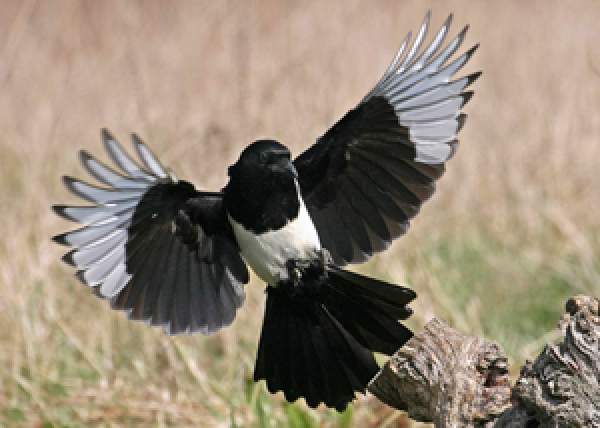Magpie
Pica pica

Seen from a distance, the Magpie appears to be a simple two-tone, black and white bird. However, the black plumage is more subtle in colour than it first appears, with a blue-green iridescent sheen evident at close range. In the open it flies, rising awkwardly, with quick flaps and glides - like a ragged kite. Among trees the species moves confidently, reflecting its agility. On the ground the tail is often held high as the bird 'kangaroo-hops' along. The raucous, cackling, call is given frequently, reflecting the intensely competitive and social nature of this species. Young Magpies have a washed-out appearance and short, stubby tails.
For many people the Magpie is a villain, responsible for the widespread decline of songbirds. Research examining the question of whether Magpies have been responsible for songbird decline has failed to find any evidence to support the notion that they are to blame. It is true that while Magpie numbers have tended to increase, those of many of our songbird species have declined. These increases and decreases have occurred over different time periods and in different parts of the country, which suggests that the general patterns are a coincidence and not cause-and-effect.
At a local level, Magpies can sometimes be a problem for nesting birds; in fact, in many gardens they are probably the second most important predator after the domestic cat. Mind you, in the absence of wild mammals like the Weasel, many garden birds probably may still suffer lower levels of nest predation than they would experience in natural woodlands and farmland hedgerows.
Like other members of the Crow family, Magpies can be very interesting to watch. They are social birds with a degree of intelligence that has enabled them to adapt to a changing environment. You only need look at the number of Magpie nests alongside many of our new road networks to see how they have learned to exploit the carcasses of animals killed by road traffic.
Find out more about Magpies on BirdFacts and the Wider Countryside Report.






Share this page